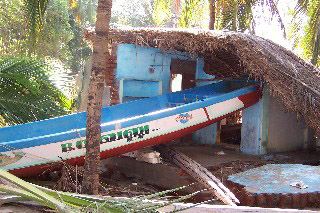The Tsunami, 10 Years Later

Ten years ago, a magnitude 9.1 earthquake off the coast of Indonesia triggered the Indian Ocean tsunami. More than 225,000 people in 14 countries lost their lives. ELAW Staff Scientist Heidi Weiskel reflects on that disaster in a Guest Viewpoint in today’s Register-Guard. She writes:
“We know sea levels are rising and we know our coastal ecosystems are the first line of defense. In the decade since the Indian Ocean tsunami, hundreds of scientific papers have been written about the importance of natural habitat barriers: mangroves, sea grass beds, coral reefs, and deltas. Scientists across disciplines have called for a systematic retreat from the sea, leaving natural buffer zones.
We even have good laws for coastal zone protection, including the U.S. Coastal Zone Management Act and the Indian Coastal Regulation Zone law. These laws were enacted specifically to limit growth and development along the shoreline.
Why, as the sea is rising and becoming more dangerous, do we continue to build out towards it?”
Heidi is a marine ecologist. She has traveled to Mexico, India, Panama and Haiti to collaborate with ELAW partners working to strengthen and enforce laws protecting coastal ecosystems.
Learn about ELAW on our website, Facebook and Twitter. Please support our work helping communities speak out for clean air, clean water, and a healthy planet.
Maggie Keenan
Communications Director
Environmental Law Alliance Worldwide

